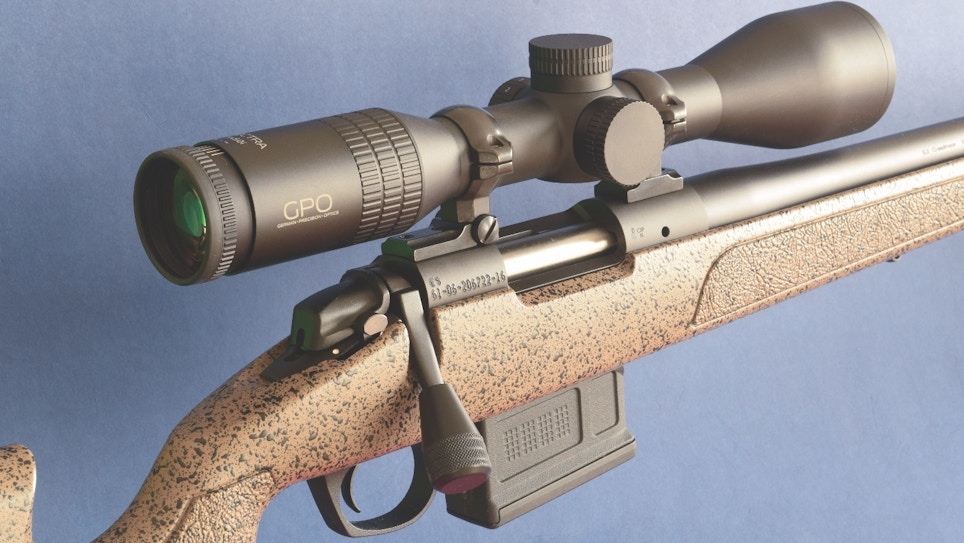
In a fixed-power scope such as this classy 7.5X GPO, reticle location makes no difference in the image.
Focal plane has nothing to do with target focus. A reticle meets a focused target image at just one target distance. Hunting scopes without an adjustable objective (a sleeve up front) or a focusing/parallax dial (left side of the turret) are set for sharp target focus and zero parallax at 150 yards. At other distances, the target might not appear quite as sharp, especially at high magnification. Also, if you move your eye off the scope’s axis, parallax will cause an apparent shift of the target behind the reticle. Ironically, parallax is most problematic at low power, where a big exit pupil gives your eye lots of room to move off-axis! With your eye on the scope’s optical axis, whatever the range or scope magnification, there’s no parallax error.
Reticle focus is independent of where the reticle is placed. You adjust it with the eyepiece, either releasing the lock ring on a traditional eyepiece, then rotating it, or just by rotating a helical or fast-focus eyepiece. This is best done with the rifle pointed into a blank sky, to prevent your eye from trying to focus on an object. This action has no effect on target focus; it makes the reticle appear sharp to your eye at all distances. You’ll adjust the eyepiece only as age changes your vision. No need for “fast focus” here!
Mil, short for milliradian, is an angular measure (like MOA, or minute of angle), a mil spans 3.6 inches at 100 yards, 3 feet at l,000 — the space between dots on a mil-dot reticle. To find range, divide target height in mils at 100 yards by the number of spaces subtending it. The result: distance in hundreds of yards. If a coyote 1.5 feet tall at the shoulder (5 mils at 100 yards) stands two dots high in the scope, it is (5/2) x 100 = 250 yards off. Or divide target size in yards by the number of mils subtended; multiply by 1,000; read the range in yards. Here: (.5/2) x 1,000 = 250 yards. You get the idea.





